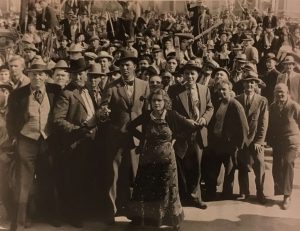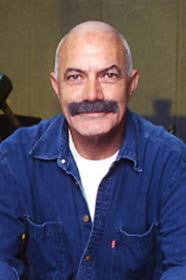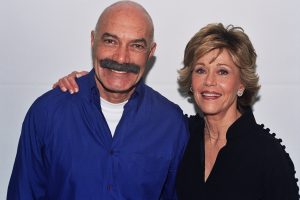Fury was produced by Joseph L. Mankiewicz (before he became a director) at MGM, a studio that was the least likely to make such a grim and downbeat movie.
It marked the first American film of the legendary German filmmaker, Fritz Lang (“Metropolis,” “M”).
Our grade: A (***** out of *****)
The gloomy tale was based on Norman Krasna’s taut, Oscar nominated screenplay, which probes mass psychology and mob violence in a fictional small town named Strand, Illinois.
The social context of the Depression is apparent from the first moments, when the two protagonists, Joe Wheeler (Spencer Tracy), and Catherine Grant (Sylvia Sidney) stand in front of a window display of elegant bedroom furniture and accessories for “the Fall Bride,” while the music plays Mendelsohn’s “Wedding March.”
It’s the kind of luxury that they obviously cannot afford as Joe works in a gas station. They are about to separate when Catherine leaves for another town to find employment.
The events are not presented from a single point of view: Lang switches from the mob to the sheriff to Joe to Catherine and back to the mob. The film’s viewers become integrated into the scene; later, in court, the viewers watch the mob members watch themselves on screen. The evangelist woman, who pleads innocence, is shocked to see herself whirling a firebrand. The prosecutor’s use of a newsreel taken during the incident is innovative, because neither participants nor film viewers realize that such newsreel exists. Lang uses town folks to demonstrate that the proclivity for evil is omnipresent, and that, under specific circumstances, every human being is capable of committing nasty monstrosities.
With almost no exception, the film’s figures are bullies, bigots, and gossips–elements most likely to join or support Fascist movements. The barber explains the universal potentiality for crime in the following way: “people get funny impulses. If y’ resist ’em, you’re sane; if y’ don’t, you’re on the way to the nuthouse, or the pen.” In the 20 years he has been “strokin’ his razor across throats, there had been many a times, I’ve had an impulse to cut their Adam’s apples wide open.” “An impulse is like an itch, you got t’ scratch.”
The whole film abounds with objects of torture and acts of violence. In addition to the barber and his razor, the dim-witted Buggs (Walter Brennan) is nabbing flies while the sheriff interrogates Joe.
In another sequence, Lang cuts from the jail to the hardware store, where ropes are hanging from the ceiling. A farmer tests a whip, snapping it venomously to punctuate his speech about Joe: “If all o’ us people just had the courage o’ our convictions, these vermin could vanish like spit on a hot stove!” It’s a far cry from the image of friendly farmers plowing the fields.
In a most impressive montage, Lang shows the exhilaration of violence, the burning of the jail: A woman holds up her child so that he gets a better view of the conflagration; a young boy eats his hot dog with hearty appetite; another woman kneels down in a religious ecstasy; and an adolescent sing joyfully, “I’m Popeye, the sailor man, tweet, tweet!”
When Joe attempts to escape, the mob throws rocks at the window, forcing him to stay in. Joe finally escapes from jail, letting the mob believe he’s dead. his speech (in what was Spencer Tracy’s most impressive performance to date) to brothers, asking them to take legal action against the lynchers, shows that the experience has turned him into a criminal seeking revenge: “I’m legally dead, and they’re legally murderers. That I’m alive is not their fault. I know ’em. A lot of ’em. And they’ll hang for it. But I’ll give them the chance they didn’t give me. They’ll get a legal trial, in a legal courtroom. They’ll have a legal defense and a legal judge, a legal sentence–and a legal death!”
His brothers protest, “you’re as bad as them!” and when Catherine finds out about his scheme, she is also appalled. “A mob doesn’t think, doesn’t know what it’s doing,” she says, “You might as well kill me, too, and do a good job of it!” But that’s precisely Lang’s point, to show the role reversal of vicitm and victimizer. Joe wants his aggressors to feel the fear and panic he had experienced. But even the more conscientious Catherine seeks revenge, though of a different kind. “I don’t want anything as blood thirsty as an eye for an eye, or a life for a life,” she states, “but I want those women to suffer, to feel what I felt. I want the woman who held up her baby to think about never seeing that baby again. I want all of them to know what it is to feel empty inside. Not to be able to cry, not to be able to think, not to want to live.”
Not a single inhabitant protests the conspiracy of silence. They are all cowards and collaborators, a fact demonstrated in a passage in which the town’s “pious” women discuss the harmful consequences a lynching trial might have on its reputation.
First Woman: “My husband says it’s be a blessing if the community would forget what happened. It just leaves a bad taste.”
Second Woman: “Now, don’t you worry, Mrs. Garrett. Nobody’s going to cut off their noses to spite their faces by naming names.”
Third Woman: But if anyone does, what will happen
Second Woman: Nobody’s going to talk. The responsible businessmen have decided it’s a community, and not an individual thing. So everybody’s got to stick together against the District Attorney.
Under pressure from Catherine and his own conscience, Joe decides to appear in jail. In his speech, he admits that the horrendous experience has shattered his belief in justice and civility. Joe used to be proud “that this country of mine was different from all others,” but those ideals “were burnt to death with me that night.” However, “the only way I could go on living, was to come here today,” and his only hope is that the experience has done those people “some good.” Lang condemns the manipulative press (an issue that will become more prominent in films of the 1970s) and its insatiable thirst for sensationalism. “What a shot this is,” says one journalist, “We’ll sweep the country with this stuff.”
Lang simulates the buzzing of hundreds gossip-disseminating bees over this scene. Another citizen retorts that the Chamber of Commerce has discussed “what a great publicity break our capturing this Chicago fellow’s going to give our little city.”
Initially, Lang wanted to make the victim a black man, but this was unacceptable. The typically happy ending scene was imposed on Lang by the studio.
Critically acclaimed and commercially successful, Fury earned domestically $685,000 and $617,000 overseas, generating a profit of $248,000.
Cultural Status
In 1995, this film was selected for preservation in the U.S. National Film Registry by the Library of Congress as being deemed “culturally, historically, or aesthetically significant.”
Oscar Alert:
Oscar Nominations: 1
Original Story: Norman Krasna
Oscar Context:
In 1936, the Original Story Oscar went to Pierre Collings and Sheridan Gibney for “The Story of Louis Pasteur,” which also was nominated for the Best Picture and other awards.
Cast
Sylvia Sidney as Katherine Grant
Spencer Tracy as Joe Wilson
Bruce Cabot as Kirby Dawson
Walter Abel as District Attorney
Edward Ellis as Sheriff
Walter Brennan as “Bugs” Meyers
Frank Albertson as Charlie
George Walcott as Tom
Arthur Stone as Durkin
Morgan Wallace as Fred Garrett
Gwen Lee as Mrs. Fred Garrett
George Chandler as Milton Jackson
Roger Gray as Stranger
Edwin Maxwell as Vickery
Howard C. Hickman as Governor
Jonathan Hale as Defense Attorney
Leila Bennett as Edna Hooper
Esther Dale as Mrs. Whipple
Helen Flint as Franchette
Frederick Burton as Judge Daniel Hopkins
Credits:
Directed by Fritz Lang
Produced by Joseph L. Mankiewicz
Written by Bartlett Cormack, Lang, Norman Krasna, based on Krasna story.
Music by Franz Waxman
Cinematography: Joseph Ruttenberg
Edited by Frank Sullivan
Distributed by MGM
Release date: June 5, 1936
Running time: 92 minutes
Budget: $604,000
Box office: $1.3 million (rentals)











